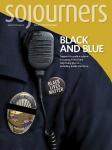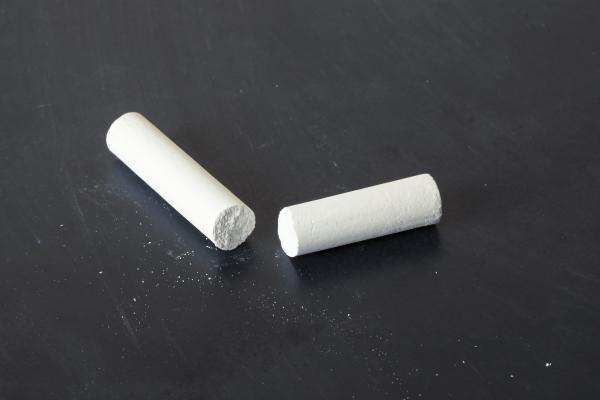A COUPLE OF YEARS AGO, while doing research on social privilege for an introductory ministry course, I came across an article titled “White Fragility.” Even a skim of the first few pages was enough to pique my excitement. In it, author Robin DiAngelo—an expert in multicultural education—describes in sociological detail a common set of defensive and destructive responses that people have when facing the reality of their own privilege.
I recognized each response she described from those my students had whenever I asked them simply to face—let alone begin to dismantle—the various forms of social privilege they each embody. Where, I began to wonder, could I squeeze this article into an already over-packed course syllabus? How could it best help us navigate the difficult issues we were trying to engage?
Emptying ourselves
Social privilege is a daunting topic to engage. When teaching it, I draw heavily on Peggy McIntosh’s now famous definition of its racial manifestation:
I have come to see white privilege as an invisible package of unearned assets that I can count on cashing in each day, but about which I was ‘meant’ to remain oblivious. White privilege is like an invisible weightless knapsack of special provisions, assurances, tools, maps, guides, codebooks, passports, visas, clothes, compass, emergency gear, and blank checks.
What McIntosh helps us see is that social patterns of privilege are maintained because people carry them about and use them while, at the same time, people are able to carry about and use their privilege because those social patterns are maintained. The effect is cyclical, and it happens without any of us being particularly aware of our own complicity in the system.
Society confers unearned gifts on people who embody particular privileged traits—straight, white, able-bodied, middle-class men, for example—while neglecting to confer them on others. This isn’t to say that people who embody more privilege are explicitly homophobic, racist, ableist, classist, or sexist. It doesn’t mean they don’t work hard for the goods they accumulate in life—of course, many do. It’s just that it feels perfectly natural to walk through an open door without ever noticing how it swings shut in the face of the equally hardworking genderqueer Latinx whose wheelchair wouldn’t even fit.
Indeed, because society is rigged this way, if a straight, white, able-bodied middle-class man wanted to recognize and share his privilege with others, he’d no doubt meet forms of resistance that make it awfully difficult to do.
Those who have ears to hear, listen , I think whenever I read McIntosh’s description—because it sounds a lot like some ancient wisdom to me. The cultural discourse of privilege helps us reimagine Paul’s Christological hymn in Philippians 2 for our contemporary culture. No matter what status we arrive with in this world, to imitate Christ means to give that status up—to empty ourselves of it. Like Christ, when we do this, we’ll no doubt meet resistance from others. Unlike Christ, when we seek this humble unity with him, this sharing in his mind and spirit, then we’ll feel this resistance rise from within ourselves too.
Fragility
From my perspective as a theologian, DiAngelo’s analysis describes one version of this internal resistance. Because white North Americans are largely protected from most forms of race-based stress, she argues, they unconsciously expect a pretty high level of “racial comfort” in their day-to-day experience. This expectation makes even the smallest amount of race-based stress feel catastrophic. Cultured to be exceedingly fragile, then, even the slightest mention of race in a given context can send whites into a tailspin. DiAngelo’s data shows that the most common responses to this fragility include paralysis from action by overwhelming guilt; fearful, aggressive, and argumentative behaviors; use of the silent treatment; or, retreat from the situation entirely.
Of course, this fragility isn’t restricted to race-based stress. The reason the concept of white fragility rang so true to me was because in teaching social privilege I had also observed the phenomena of male fragility, hetero fragility, able-bodied fragility, and so on. I had seen this range of defensive emotions and destructive behaviors run the gamut of privileged social positions.
DiAngelo therefore diagnoses a social problem that is also spiritual. She gives contour to the resistance that happens inside each heart that seeks to be united with Christ: For I do not do the good I want to do, but the evil I do not want to do—this I keep on doing. Now if I do what I do not want to do, it is no longer I who do it, but it is sin living in me that does it (Romans 7:19-20). Embodying the sinful patterns of this world—including those that hold together dynamics of social privilege—we become incapable of performing anything but those patterns.
The truly devastating blow in DiAngelo’s argument, however, comes in the effects that this fragile disposition has on the social contexts in which its responses are exercised. When privileged people crumble under even the smallest threats to their privilege, their typical defensive reactions simply return things to the equilibrium of the status quo.
In other words, the fragility that privileged people feel actually maintains the heart of their privileged power. Out of fear and in our rage, we keep choosing to inhabit the world as it is rather than labor to bring about the world as God would have it be.
A delicate balance
Prior to encountering DiAngelo’s analysis of fragility, I had agonized over my syllabus in every semester. I’d tried to discern the gentlest way to introduce concepts of privilege, so that I neither overwhelmed those who most embodied it nor let them off the hook too easily. But this delicate balance of communicating complicity, without necessarily imposing culpability, is nearly impossible to pull off.
In one semester I emphasized the personal experience of privilege so much that students felt personally attacked and refused to engage course materials. In class comments and written assignments (not to mention course evaluations!), students oscillated between toxic anger and facilely naming their own privilege without making any moves toward dismantling it. I found these latter students’ behavior most upsetting, as they scored “progressive points” for naming their privilege in a way that actually bolstered it.
The next semester I overcorrected, emphasizing the social dynamics of privilege instead. This left students feeling trapped by overwhelming, guilt-inducing forces of history and culture, which they experienced as voiding their own agency. Students are supposed to choose their ministry placements for the following year at the end of this course. Those who had entered the program fired up with concerns about radical social justice now wanted to choose a “safe” site. I’d inadvertently quashed their passions and rechanneled them toward goals that would have dismayed their former selves.
They weren’t the only ones who were daunted by the experience, though. I, too, was considering abandoning this more radical line of teaching. My efforts at transformative pedagogy were increasing my privileged students’ fragility rather than their humility, vulnerability, or willingness to partner with others for social justice and change. Whether my pedagogical perils induced feelings of anger or guilt, denial, defensiveness, or retreat, the effect was the same: Classroom conversation was immediately returned to the status quo control by the most-privileged students. What this meant was that, in the most frustrating turn of hydra-headed irony, every strategy I employed to chip away at dynamics of privilege instead initiated a process by which women, LGBTQ students, and students of color became further silenced.
I felt like I was doing more harm than good. Like my students, I felt ready to give up.
Diagnosing the problem
Here’s the thing: Transformative education requires a high level of relational functioning in the classroom for it to work. It’s a form of teaching that doesn’t allow the teacher to rely solely on her own expertise. It doesn’t place her at the front of the room doling out information to supposedly uninformed students. Transformative education, rather, rightly situates the classroom within the broader context of the class members’ daily life story, acknowledging that everyone has a gift to bring to the shared journey of teaching and learning together.
In this model, teachers and students alike must listen and respond to each other with empathy and trust. This requires vulnerability. The idea, then, is that as we build these qualities together in the classroom, we are transformed to be agents of transformation in the world outside the classroom doors.
Critically, however, fragility is not the same thing as vulnerability.
Being able to name one’s vulnerability, like being able to name one’s privilege, carries a lot of social cachet in Christian circles these days. So the destructive fragility that more-privileged students experienced in our classroom invariably masqueraded as positive vulnerability—and prevented the empathy, trust, and genuine vulnerability required for transformation.
I needed some help to get us out of this bind. The concept of fragility gave me a framework for at least diagnosing the problem at hand by providing a structure to analyze the intricacies of students’ responses. Using the lens of fragility, what had previously appeared as an undifferentiated rush of irrational anger could now be seen as a series of discrete emotional and behavioral—and, we might say, spiritual—responses.
So when a white male student threw up his hands and snidely described himself as the enemy, closing the small space into which the middle-aged Korean woman was trying to narrate her experiences of sexism and racism, I had a framework for gently resisting his resistance. Later, when that same woman refused the language of cisgender that her transgender colleague was introducing to make sense of his life experience, and her genderqueer colleague was using to make sense of theirs, I had a framework for understanding how difficult it was for this woman to hear for the first time that her gendered oppression was also a form of gender privilege.
In this way, the concept of fragility helped me begin to hear my students more empathetically, communicate with them more effectively, and help them communicate with each other. By diagnosing the fragility for what it is, we become able to respond to it with empathy and thereby begin to turn that fragility into the type of vulnerability that is crucial for transformation.
Teacher, teach thyself
As a teacher, the particular challenge of this kind of classroom is that each student is at a different point in their own journey in relation to understanding, engaging, and dismantling their social privilege. Each student is at a different place in the journey of turning their defensive and destructive fragility into the open and empathic vulnerability that is required for social change.
But here’s the kicker: So, too, am I.
In a moment of painful honesty with myself, I had to realize that the dynamic DiAngelo describes wasn’t just familiar to me because I witness it in my students. This fragility is familiar to me because I’ve experienced it in myself, too.
Each time I’ve taught this course, I have been at a different point in my journey toward turning from the insecurity of my own brittle fragility to the surprising security of genuine, open vulnerability. Each time I teach this course, I’m at a different point in the journey of living into the liberation from guilt that Christ works in me so that I don’t have to strive—and fail—to fix myself in God’s image. I’m at a different point of letting God work in me.
I recently was asked to name the most surprising lesson from my first few years of being a professor. My response: I knew I’d need to work on my scholarship and teaching, but I had no idea how much I’d need to work on my self. Better put, I had no idea how much I’d need to lean on Christ’s working in me. Whenever I was challenged in class, I’d feel a panicked, protective reflex to shore up my own power. I’d go on the defensive. I’d lock it down.
This meant that the hardest thing about teaching students how to dismantle their own privilege has been learning how to do it for myself.
I have the privilege of teaching this course again next fall. It will offer me yet another chance to open myself to the Spirit’s work in me. When my students pick up that overstuffed syllabus and see the reading on white fragility mixed in with readings by McIntosh and others, they probably won’t know that it’s there for me as much as it’s there for them. They’ll probably never know just how much I, too, need the reminder to be vulnerable instead of fragile—that I need just as much help as they do to stay engaged in that process of mutual transformation with them.
Perhaps next year will be the year I feel sufficiently secure to be vulnerable enough to tell them.

Got something to say about what you're reading? We value your feedback!

